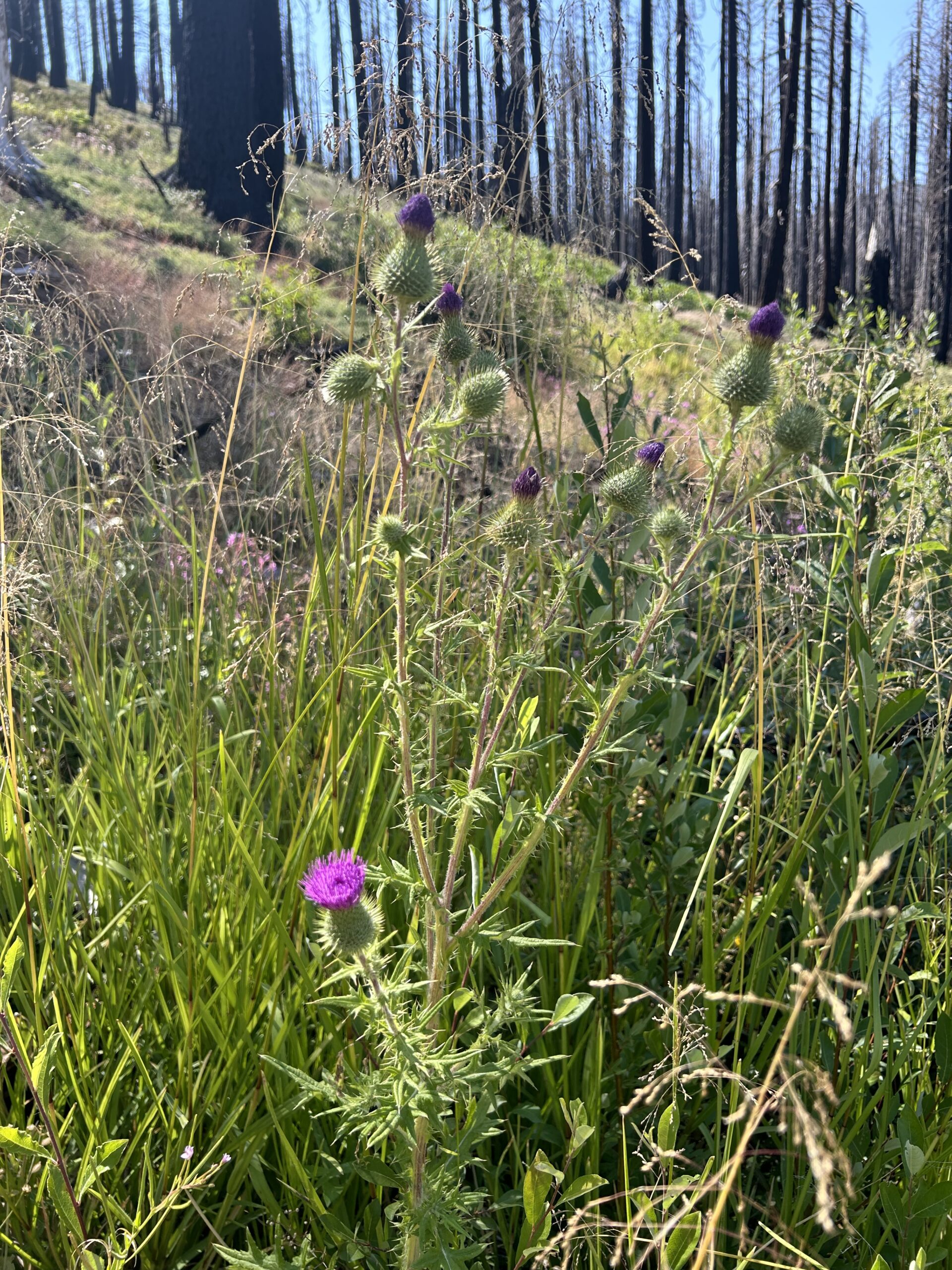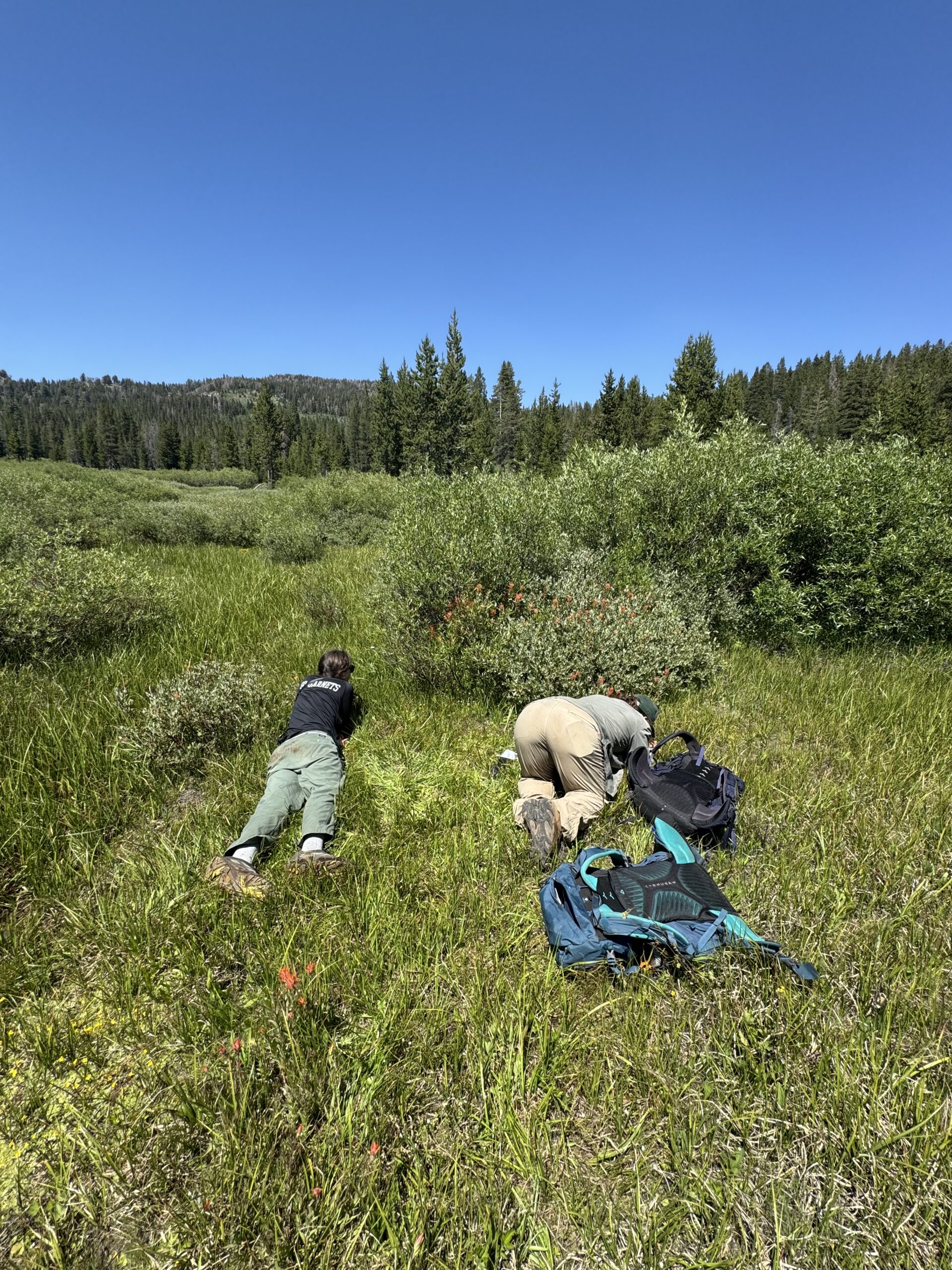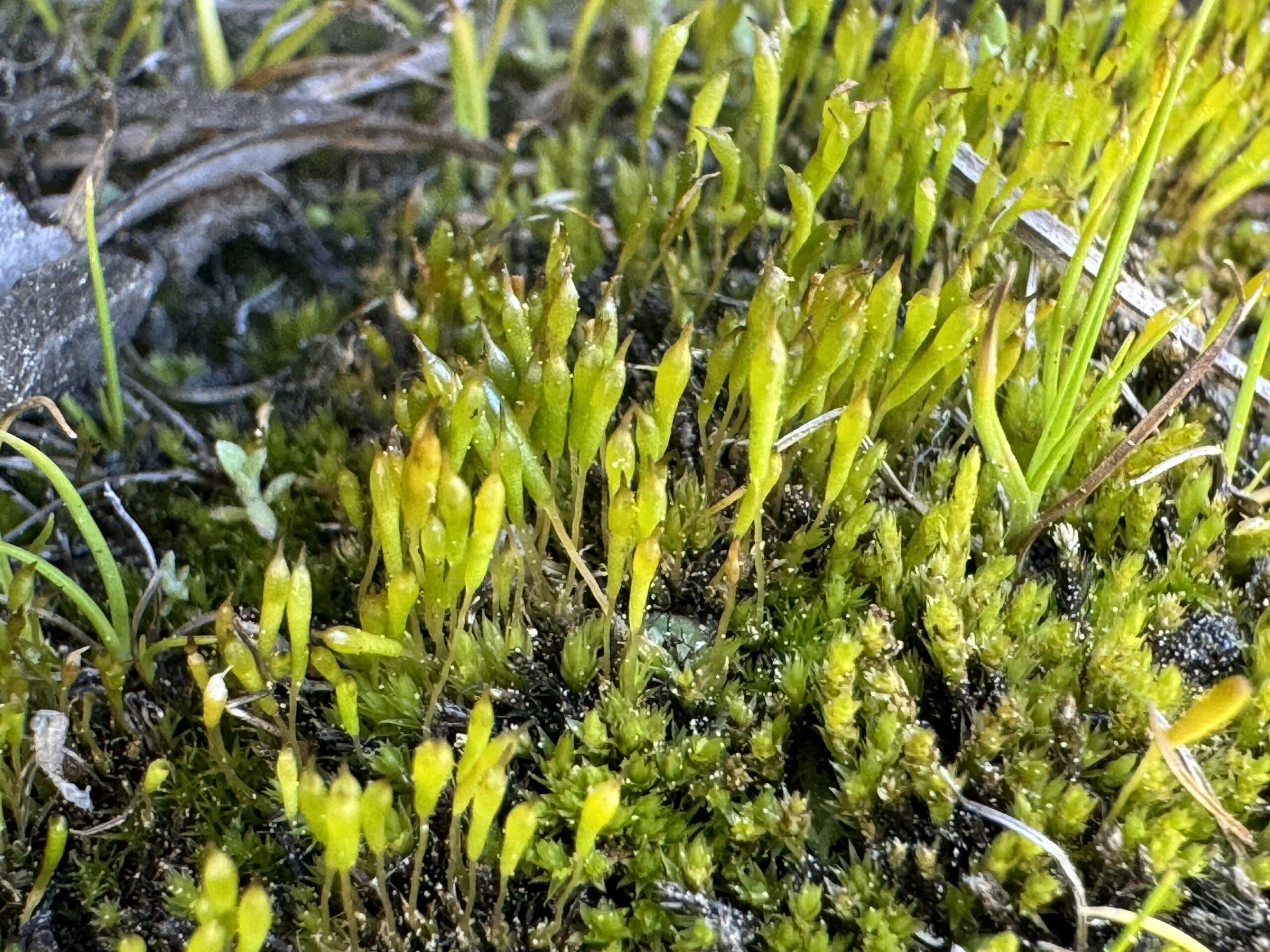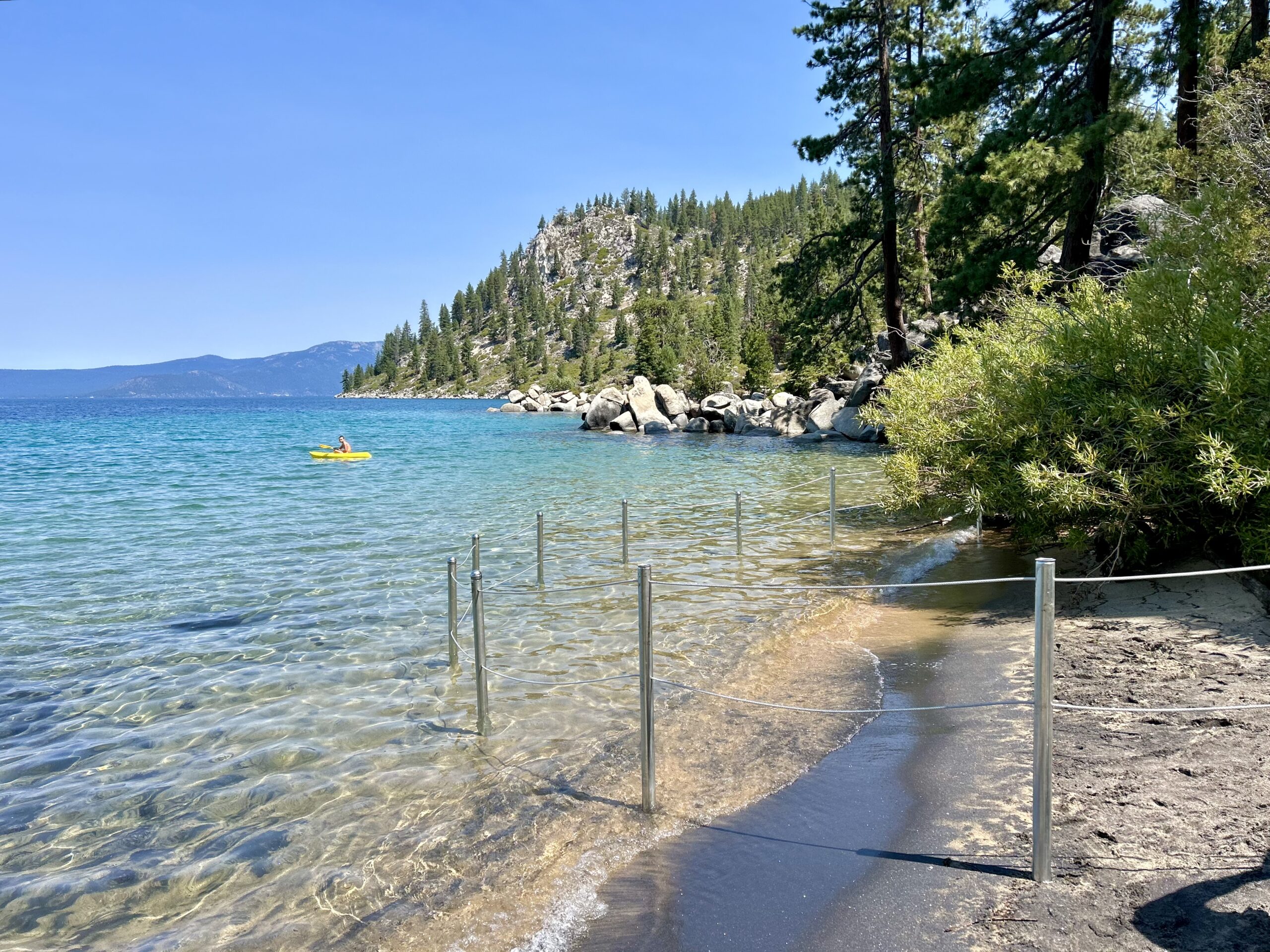A couple of weeks ago, I cried about missing the summer storms in the Northeast. Not to say I don’t appreciate the constant 75-degree sunny days, but sometimes I long for the kind of rain that pounds on the windows, and thunder that shakes the house. The next day at work, it started to thunder for the first time since I’ve been here and stopped right after we took out lunch break. That day really cemented the importance of manifestation in the workplace for me.
Lack of torrential downpours aside, the field season has been going great! The botany crew here at LTBMU has been finishing up our invasive plant removal for the season (aside from when bull thistle rears its ugly head…) and moving towards surveys. In our survey plots, we identify and record every plant species we find. Initially, this was really overwhelming, but it’s been a great way to learn more plant IDs. Our surveys have been concentrated in the burn scars from the Caldor fire in 2021 and are one way to document how the forest is regenerating from this high intensity fire. Although invasive plants have been popping up in patches here and there, the forest seems to be regenerating well, with many native species, like fireweed (Chamerion angustifolium) and quaking aspen (Populus tremuloides) gaining a foothold. In addition to documenting regeneration, surveying has helped Gerardo and I find many seed-source populations of target species, like spreading dogbane (Apocynum androsaemifolium) and Anderson’s thistle (Cirsium andersonii). We have also surveyed for several rare and sensitive species, like the veiny water lichen (Peltigera gowardii) and Bolander’s candle moss (Bruchia bolanderi). These surveys involved a lot of crouching in streams and laying down in bogs, but it was worth it to map these cute little plants.



Last week, we took a break from surveys and seed scouting to work on an exciting collaboration with the Washoe tribe. On a stretch of beach on Skunk Harbor, one of Lake Tahoe’s most scenic shorelines, we constructed an enclosure for Tahoe yellow cress (Rorippa subumbellata). Then, within the enclosure (and surrounding area), we planted 300 small plugs of Tahoe yellow cress grown by the Washoe tribe. Hopefully, these little seedlings will go on to produce a thriving population. Tahoe yellow cress is an endangered species endemic to Tahoe, meaning it grows on the beaches of Lake Tahoe and nowhere else in the world. This little member of the mustard family is primarily threatened by recreation (trampling), so ideally our enclosure will allow the yellow cress to reestablish in Skunk Harbor. After finishing up the planting, we squeezed a quick swim into our lunch break.


After a few weeks of surveys, scouting, and planting, I definitely feel more settled in. While I miss lush, stormy summers with firefly lit evenings scored by katydids, I’m finding new things to love about summer here in the basin: the sweet, caramel-like smell of Jeffery pine bark (Pinus jefferyi), beaches with perfect turquoise water, freezing alpine lakes surrounded with wildflowers, and the little groves of aspens that remind me of the trees back home.
